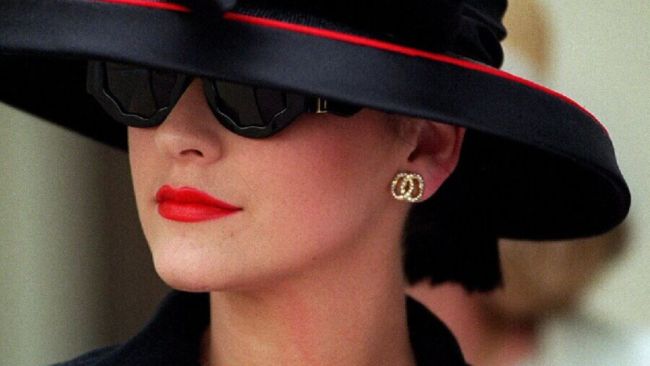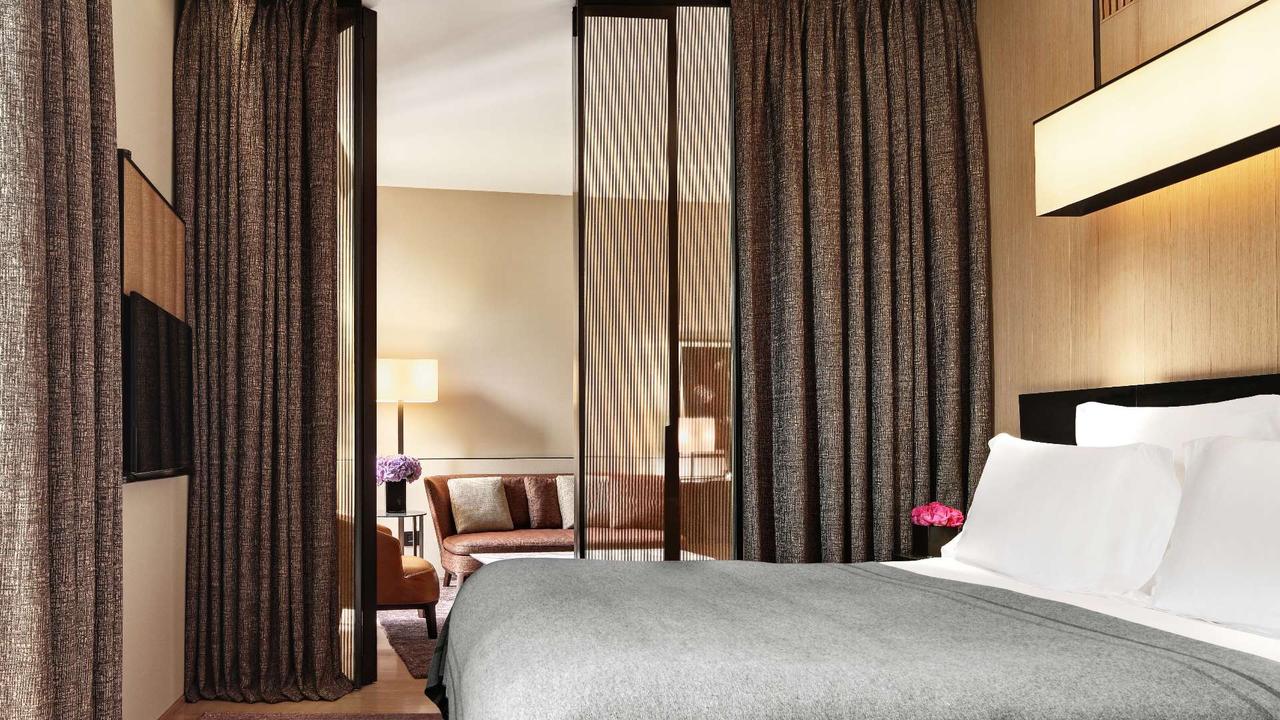Milan Men’s Fashion Week highlights: Prada; Fendi, Armani; Zegna
As Milan sweltered, Men’s Fashion Week delivered everything from jumpsuits to fur coats — with surprising punctuality.

We Australians think we know all about heat, but there’s nothing quite like an Italian heatwave during the men’s spring-summer shows to remind you that European weather can be just as harsh as our climate.
“We are having August in June,” says one taxi driver. “If this is what June is like I don’t want to be here for August,” says another. Yet Italians have mastered the knack of looking good in the unrelenting heat. How they do it is a mystery. Milan is a city of hard surfaces — it even looks hot. There are a few green parks scattered throughout the city, but its centre is one of paving stones and bitumen and alarmingly little shade.
The best way to catch a breeze here is to buy a fan; or you could cool down like a photographer I followed from one show to the next — he stopped by a roadside kiosk, bought a bottle of chilled water and poured it over his head before walking into the next show space.
One benefit to the heat in Milan: shows more or less started on time as people didn’t do what they usually do — stand outside in the heat talking or smoking. (Italians are still indulging in the two activities much of the Western world gave up long ago because of health concerns: smoking and sunbaking.)
It was simply too hot for either of those pastimes — the lure of airconditioning got guests inside and in their seats with a punctuality rarely seen in Italy and almost unheard of during any fashion week anywhere.
PRADA
Given the heat and the fact the collections being shown this particular week are for spring-summer, how does one explain the presence of woollen coats on the Prada runway? The answer has more to do with the fashion and retail system than it does with any artistic expression.
This collection will start making its way into shops in January after the winter sales period. In the northern hemisphere, where most luxury fashion is sold, that means the middle of winter and shops need something they can sell in the months before the weather warms up. If you can’t change the system, adapt to it.
Miuccia Prada’s collection was inspired by the narrative world of comic books, which, she said backstage after the show, appealed to her because they were the opposite of contemporary ways of storytelling such as virtual reality. For the show, Prada commissioned artists Ollie Schrauwen and James Jean to transform the space with large-scale illustrations of trains, giant ants and apes with beaming cosmic rays. Some of these works found their way on to the garments themselves in a collection that had a 1950s vibe to it — high-waisted trousers, short-sleeved shirts with upturned collars and pointed shoes. An abundance of jumpsuits also gave the collection a distinctly utilitarian feel. Prada told journalists she was “crazy about jumpsuits”. She has a flair for presenting collections that seem radical at first but by the time they drop in stores everyone will want to wear them. After all, there was more than one man in a jumpsuit spotted on the streets of Milan during fashion week.

FENDI
Fendi’s men’s wear collection was one of the few to feature neckties, a men’s clothing staple that disappeared from runway shows a long time ago. Fittingly this was a collection inspired by office workers. The set for the show resembled a minimalist marble-clad office lobby and the models entered the runway via sleek stainless-steel lift doors and exited through turnstiles. But these were not your average office workers. Designer Silvia Venturini Fendi said after the show it was inspired by people who conduct business over Skype whereby a person’s body seemingly was cut in half at desk height.
Several looks in this collection were business on the top half and sportswear down below. The mixing of traditional, more formal men’s wear items with casual pieces was a theme that ran through the collection, as was the reinterpretation of men’s wear staples in a more modern way. The Fendi man may be wearing a blue business shirt with a contrasting white collar and tie, but look closer and the shirt is sleeveless. A check jacket was produced in a sheer fabric and worn with shorts, and what better item to wear it with than a thigh length fur coat (this is Fendi after all).
GIORGIO ARMANI
There were no show notes — typically a one-pager that details the designer’s inspiration for a collection — for Giorgio Armani’s collection, just the words “Made in Armani” projected on the wall at the back of the catwalk. The collection was pure Armani: soft tailoring, softer colours (grey, beige and a suite of head-to-toe white looks for the finale), cropped trousers, pops of colour and navy blue and all rendered in a range of textured and technical fabrics.
Armani isn’t a designer who feels the need to reinvent the wheel each season. He knows what his customers want and he delivers it, in spades — the collection consisted of almost 100 looks.
“Wearable” isn’t a word you hear uttered much at a fashion show and when it is it’s often said disparagingly. Yet when the fashion system is constantly being disrupted and often is said to be broken — most of the boutiques on Via Montenapoleone in Milan had heavy winter clothes in their windows when it was sweltering outside — Armani gave his customers what they want. They want to be Made in Armani.
ERMENEGILDO ZEGNA
Zegna made its name as a tailoring house — as a producer of the finest, sharply cut suits made from the best Italian fabrics, often woven from Australian wool. Of course the main reason the brand is so well known here is not because of its fabrics and use of Aussie wool but because it was Paul Keating’s suit maker of choice when he was prime minister. Today’s Zegna, however, is a long way from the double-breasted suits favoured by Keating (though you will still find versions of them in Zegna stores).
Under the creative direction of Alessandro Sartori since last year Zegna has been pushing a more directional point of view. This is Sartori’s second collection for the brand and what he showed was a far more casual approach to tailoring than Zegna has been traditionally known for. The collection he presented at the Universita Statale Milano featured completely unstructured jackets, track-style pants and loose-fitting trousers in fabrics that ranged from light silks to soft suedes.
This was a collection with a sports-luxe vibe to it; tailoring at its most relaxed. If the Milan weather was a taste of what the coming summer will be like, then this collection represented the future of tailoring.




To join the conversation, please log in. Don't have an account? Register
Join the conversation, you are commenting as Logout